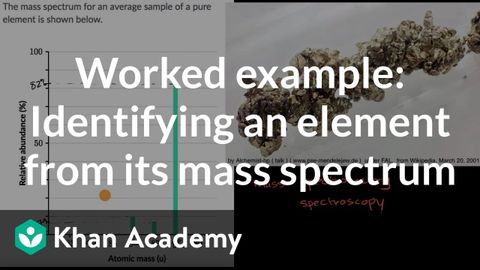
字幕と単語
実践例。質量スペクトルから元素を同定する|AP化学|カーンアカデミー (Worked example: Identifying an element from its mass spectrum | AP Chemistry | Khan Academy)
00
林宜悉 が 2021 年 01 月 14 日 に投稿保存
動画の中の単語
average
US /ˈævərɪdʒ, ˈævrɪdʒ/
・
UK /'ævərɪdʒ/
- n. (c./u.)平均
- v.t.平均する
- adj.典型的な : 普通の : ありふれた : 普段の
A2 初級TOEIC
もっと見る エネルギーを使用
すべての単語を解除
発音・解説・フィルター機能を解除
